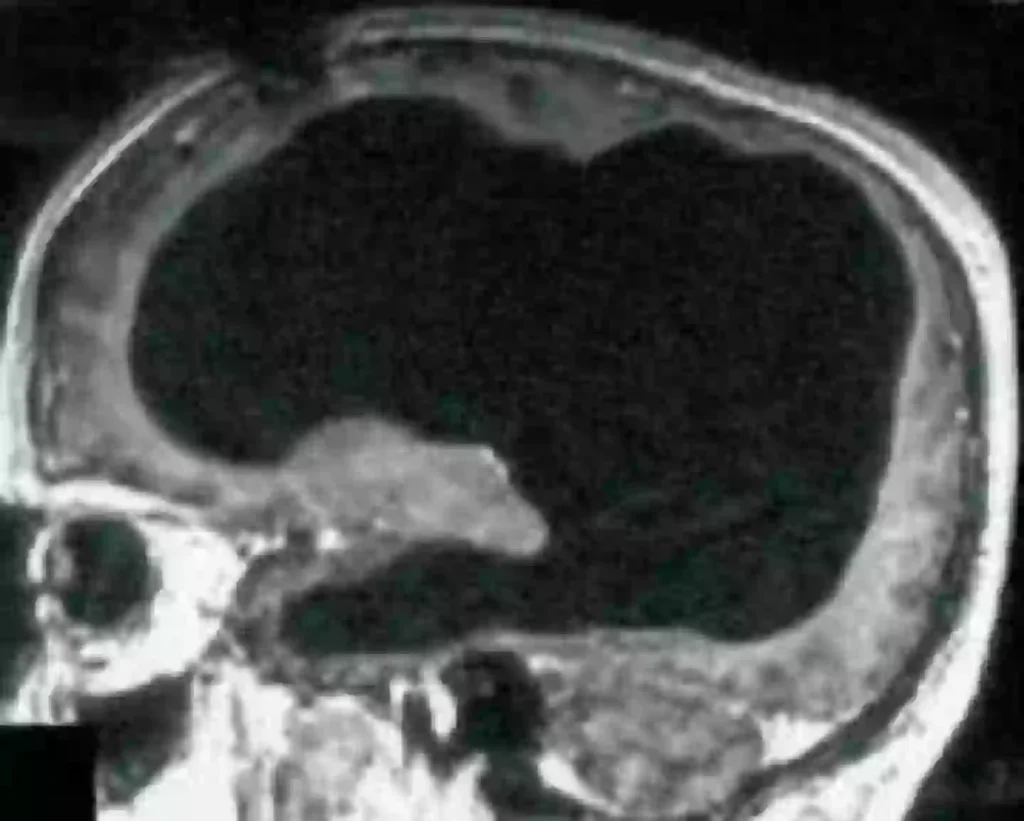In fact, the man’s skull was primarily filled with fluid, leaving only a thin layer of brain tissue. This condition even has a name; it is referred to as hydrocephalus.
Cognitive psychologist Axel Cleeremans articulated the case in the journal and stated: “He was leading a normal life. He has a family. He works. His IQ was evaluated at the time of his issue. This resulted in a score of 84
, which is slightly below the average range … So, this individual is not bright.”
The man, who fortunately avoided any stigma by having his identity kept private, lived his entire life unaware that anything was wrong with him.
A scan of his brain revealed just how much… well, empty space existed.

The scan should show the man’s brain… except most of it is missing. (Feuillet et al./The Lancet)
Doctors believe that the majority of his brain was gradually lost over three decades due to the accumulation of fluid related to his condition.
Interestingly, he had been diagnosed with it as a baby and received treatment with a stent, but it was removed when he was 14 years old, and since then, it appears that most of his brain has been worn away.
However, this did prompt questions regarding our understanding of consciousness. In the past, researchers have proposed that consciousness might be associated with distinct specific brain areas.
Nevertheless, cases like this have led scientists to different theories suggesting that it is improbable for a single specific area alone to account for consciousness.
Some have even proposed that adult brains are more flexible than we once believed and can allow different parts of the brain to assume new functions in the event of injury.
Featured Image Credit: Hospital de la Timone/getty stock images

